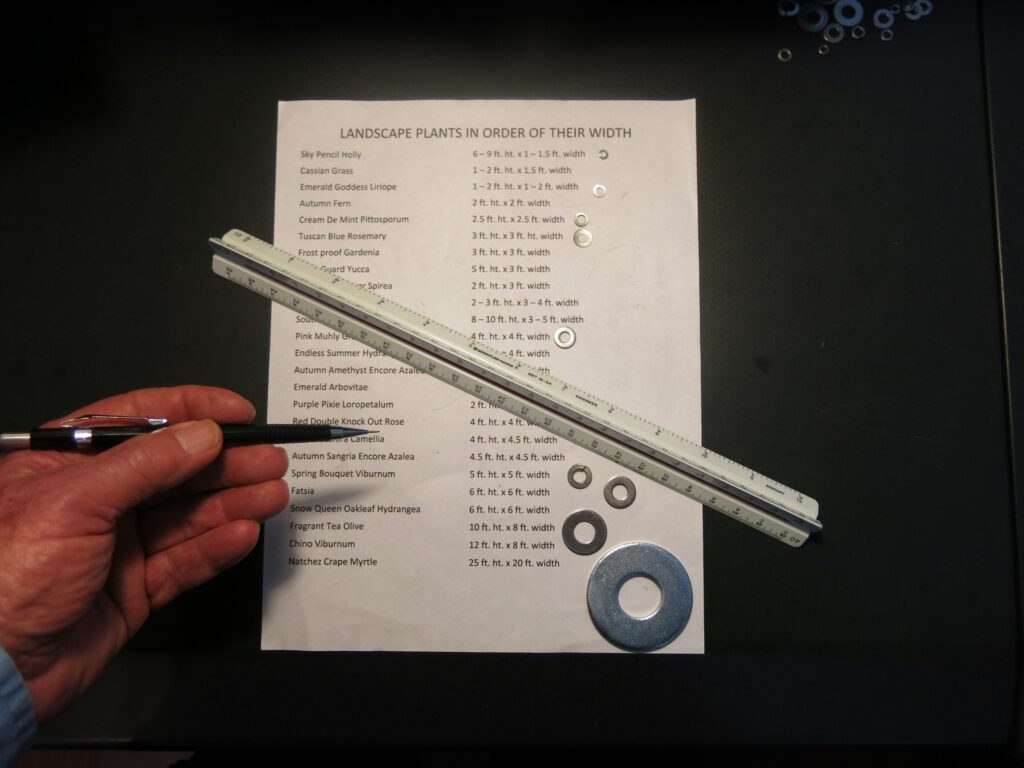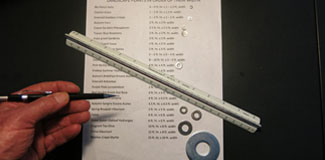THE NUTS, BOLTS AND “WASHER” METHOD
 The “washer” method was devised to help landscape design students determine the proper width of plants so that plants could be put in the right places. It is my opinion that the designer should have no predetermined idea of what plant is going to be used at a specific spot on the drawing without first consulting a list of plants in regard to their manageable height, width and light requirements. Think of plants as being “circles.” Small plants have smaller circles, and large plants have larger circles. So various circle sizes represent various plant widths. These circles are typically drawn by use of a “circle template” (i.e. a drafting stencil).
The “washer” method was devised to help landscape design students determine the proper width of plants so that plants could be put in the right places. It is my opinion that the designer should have no predetermined idea of what plant is going to be used at a specific spot on the drawing without first consulting a list of plants in regard to their manageable height, width and light requirements. Think of plants as being “circles.” Small plants have smaller circles, and large plants have larger circles. So various circle sizes represent various plant widths. These circles are typically drawn by use of a “circle template” (i.e. a drafting stencil).
The “washer”method is simple. Here’s a typical question in a residential planning scenario: How many plants will be located in front of a foundation wall that is 20 ft. long, with window sills at a height of 3 ft., & leave room for 2 outside corner plants that are 5 ft. in diameter? Before answering, you may want to keep in mind that odd number of similar plants look best in groups of 9 or less. Place circles that represent 3 ft. diameter plants in front of wall; and place larger circles representing 5 ft. diameter plants at each corner of the house. Make a dot in center of each circle template as you continue to use it as you follow the line representing the front of the house. These dots will be used to center the template circles later. Continue this method on all sides of residence. Next Draw the circles with the use of the template and label the circles you have drawn with specific plants according to a plant list which shows plant heights/widths and light requirements. Remember, it is easier to move dots where everything comes out perfect than to move a template and make circles, erase and redraw circles.
To learn more may I encourage you to sign up for the Landscape Design Class at Midlands Technical College, Northeast Campus, beginning Mon. Feb 15 from 6:00 pm to 9:00 pm. Seniors get a 10% discount off of the already low prices.
Ron Cowart Consultant. cowartconsulting@gmail.com





